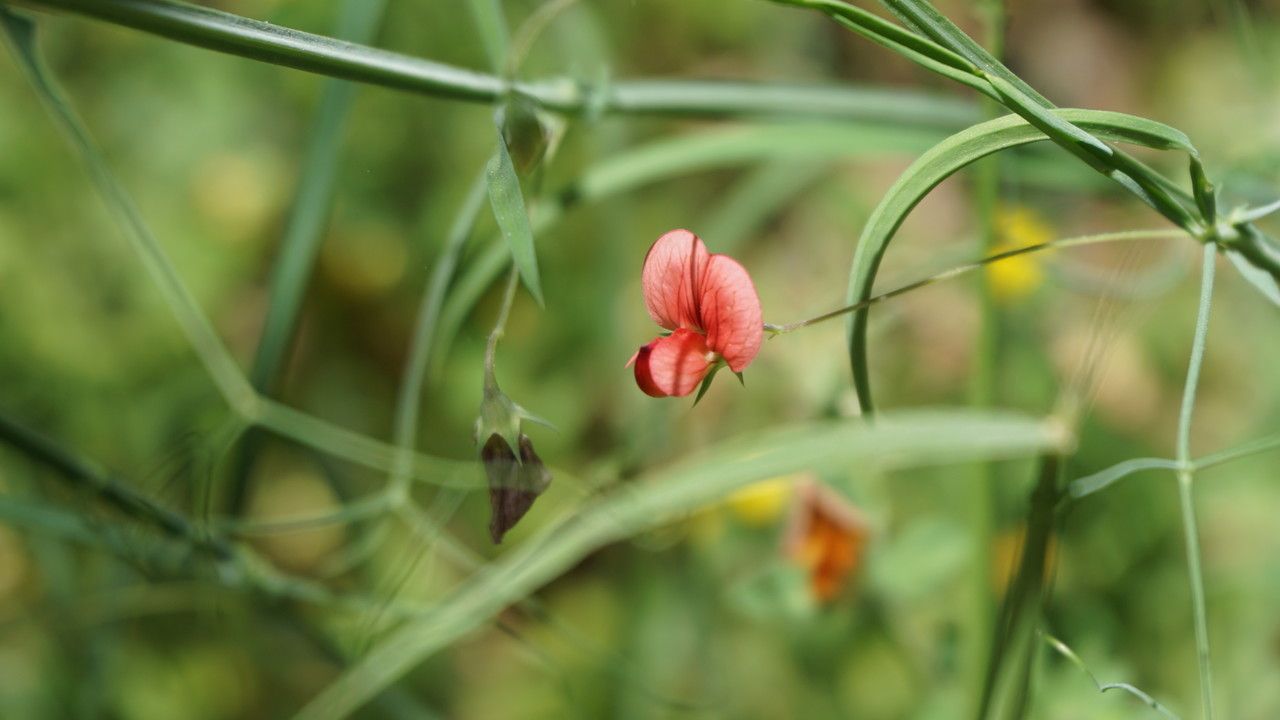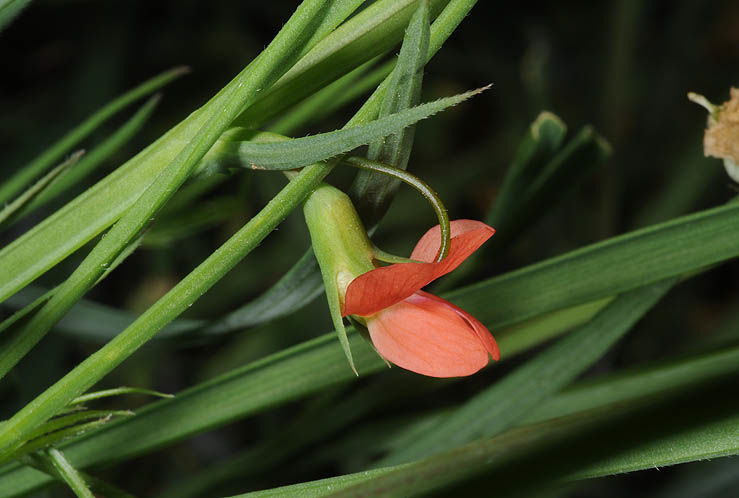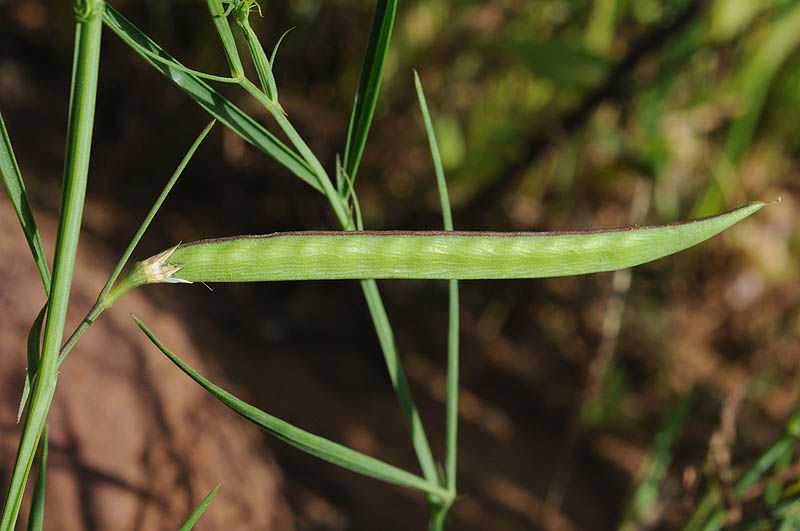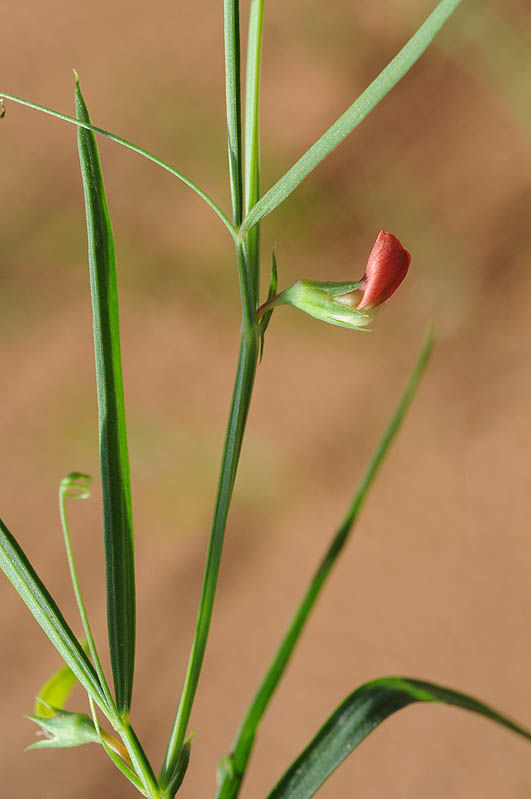Round Pea
lathyrus sphaericus
Also known as: ["Round Pea Vetchling","Round-leaf Pea"]
Overview
A small, annual legume with rounded leaves and small, pea-like flowers, native to parts of Europe and Asia.
Benefits & Perks
["wildlife attractant (bees, butterflies, birds)","drought tolerant"]
Botanical Classification
| Phylum: | Magnoliophyta |
| Class: | Magnoliopsida |
| Order: | Fabales |
| Family: | Fabaceae |
| Genus: | Lathyrus |
| Botanical Name: | Lathyrus sphaericus |
Plant Characteristics
Basic Information
- Category: Flowers
- Suitable Location: garden bed or container in a sunny spot
- Suitable For:
- Is Weed: No
- Allergenicity: low
Environmental Needs
- Climate: {"temperatureRange":"10–30°C"}
- Hardiness: {"zones":"8–11"}
- Misting: rarely required, only if ambient humidity is very low
- Drainage: Fast-draining to prevent waterlogging.
- Soil Type: Well-draining, loamy soil with added organic matter.
Maintenance Level
- Maintenance Level: low
- Toughness Level: moderate
- Pruning Frequency: As needed, typically after flowering or in early spring.
- Pruning Intensity: Moderate; remove up to one-third of growth if necessary.
Care Details
Ideal Sunlight Coverage:
Full sun to partial shade (6–8 hours of direct sunlight daily); adjust for intense summer heat.
Sunlight Tolerance Tips:
Acclimate plants gradually to direct sun; protect from harsh midday sun in summer; ensure good air circulation.
Care Requirements
Care Difficulty
easymoderate
Sunlight
full sun to partial shade
Rotate plant weekly for even growth; use sheer curtains to filter intense light indoors.
Watering
every 7–10 days during active growth, reduce in winter
Water thoroughly but allow soil to dry between waterings; avoid overhead watering to prevent fungal issues.
Soil
well-draining, loamy soil with moderate organic content
pH: Slightly acidic to neutral (pH 6.0–7.0).
Use a mix of potting soil and perlite; avoid heavy clay soils; ensure pots have drainage holes.
Temperature
Prefers moderate temperatures (60–75°F or 15–24°C); tolerates cooler nights but avoids frost.
Avoid sudden temperature changes; protect from frost; ensure good air circulation in heat.
Fertilizing
every 4–6 weeks during growing season
Apply fertilizer after watering to prevent root burn; flush soil occasionally to prevent salt buildup.
Propagation
Methods
Stem cuttings or seed propagation.
Step-by-Step Propagation Guide
- Take a healthy cutting.
- Remove lower leaves.
- Dip in rooting hormone (optional).
- Plant in medium.
- Keep moist.
Best Time: Spring or early summer when the plant is actively growing.
Environment
Warm, humid environment with indirect light; maintain consistent moisture.
Medium
Well-draining potting mix with perlite or sand.
Hormone
Optional, but rooting hormone can improve success rates.
Timeline
Roots may develop in 2–4 weeks; establish in new pot after 6–8 weeks.
Tools Needed
Pruning shears, rooting hormone, small pots, well-draining medium.
Quick Tips
Use healthy, non-flowering stems; maintain humidity with a plastic cover; avoid direct sun.
Pruning & Repotting
Pruning Guide
Method
Pinch back tips for bushier growth; cut back leggy stems to encourage branching.
Pruning Plan
Prune to maintain shape, encourage bushier growth, and remove dead or diseased parts.
Tools
Clean, sharp pruning shears or scissors.
Checklist
Sterilize tools; prune during dormancy or after flowering; remove dead or crossing stems.
Repotting Guide
Best Season
Early spring before new growth begins.
Pot Size
Choose a pot one size larger (2–3 inches wider) than the current one.
Method
Remove plant gently; trim roots if crowded; place in new pot with fresh soil; water lightly.
Suggestions
Repot every 2–3 years or when roots fill the pot; beneficial for growth and health.
Checklist
Use fresh potting mix; ensure good drainage; water after repotting; avoid fertilizing for a month.
Advanced Care Tips
Watering Mastery
Watering Checklist
Check soil moisture before watering; water early in the day; ensure proper drainage.
How to Apply Water Properly
Water at the base of the plant, ensuring moisture reaches the root zone; allow excess water to drain away completely.
Watering Schedule Tips
Water deeply once the top inch of soil feels dry; reduce frequency in winter to prevent root rot.
Soil Improvement
Add perlite or sand for drainage; incorporate compost for fertility; ensure good aeration.
Temperature Stress Management
Signs of Temperature Issues
Wilting, yellowing leaves, or stunted growth in extreme heat or cold.
Cold Stress
Slows growth and may cause leaf drop; prolonged cold can damage or kill the plant.
Solution: Move to a warmer location; provide frost protection in cold climates; avoid cold drafts.
Hot Stress
Leaves may scorch, wilt, or drop; flowering may be reduced in excessive heat.
Solution: Provide shade during peak heat; increase watering; use mulch to retain soil moisture.
Fertilizing Guide
Fertilizing Checklist
Use diluted fertilizer; fertilize during active growth; stop in dormant periods.
Fertilizing Method
Use a balanced liquid fertilizer diluted to half strength every 4–6 weeks during growing season; avoid fertilizing in winter.
Common Problems & Solutions
Toxicity Warning
Cats
Slightly ToxicCats are susceptible to the toxic amino acids in Lathyrus sphaericus seeds, which can induce neurolathyrism and neurological deficits. Chronic ingestion poses a serious health risk.
⚠️ Symptoms:
🌿 Toxic Parts:
⚡ Toxic If:
if eaten
Dogs
Slightly ToxicThe seeds of Lathyrus sphaericus can cause neurolathyrism in dogs, leading to neurological dysfunction. Chronic exposure may result in severe motor impairment.
⚠️ Symptoms:
🌿 Toxic Parts:
⚡ Toxic If:
if eaten
Humans
Slightly ToxicLathyrus sphaericus contains toxic amino acids that can cause neurolathyrism, a condition affecting the nervous system. Prolonged consumption of the seeds can lead to irreversible neurological damage.
⚠️ Symptoms:
🌿 Toxic Parts:
⚡ Toxic If:
if eaten
Frequently Asked Questions
Q: Is Lathyrus sphaericus toxic to pets?
A: It is mildly toxic to dogs and cats if ingested.
Q: Does this plant attract wildlife?
A: Yes, it attracts bees, butterflies, and birds.
Q: How easy is it to grow?
A: It is easy to grow and requires low maintenance.
Quick Reference
| Family: | Fabaceae |
| Care: | easy |
| Light: | full sun to partial shade |
| Water: | every 7–10 days during activ |
Get Expert Care Tips
Download the Plantious app for personalized care reminders and plant identification!
Google Play App Store








